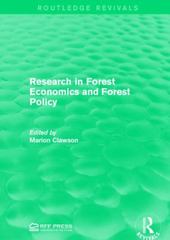Question
1. How do the solutions by the poor and the rich illustrate the trade - off between equity and efficiency? (Select each correct answer.) oThe
1.
How do the solutions by the poor and the rich illustrate the trade - off between equity and efficiency?
(Select each correct answer.)
oThe optimal tax rate from the perspective of the rich yields higher efficiency
oThe optimal tax rate from the perspective of the rich yields higher equity
oThe optimal tax rate from the perspective of the poor yields higher efficiency
oThe optimal tax rate from the perspective of the poor yields higher equity
oEfficiency is lost due to the leaky bucket
oEfficiency is lost due to diminishing marginal utility
oThis redistribution is perfectly efficient
2.
Suppose poor households have preferences over consumption and leisure (T) given by u (C, T) = 1n (C) + 1n (T), and they can work at hourly wage wp = 5. Assume consumption costs one dollar, and they have 24 hours in a day to allocate to either leisure or working.
Solve for the household's optimal bundle of consumption and leisure.
C =
T=
How much utility do they get?
u=
3.
1 point possible (graded)
Using what you found above, what is the optimal tax rate Trich that maximizes the income of a rich individual?
Trich =
4.
1 point possible (graded)
How do the solutions by the poor and the rich illustrate the trade-off between equity and efficiency?
(Select each correct answer.)
oThe optimal tax rate from the perspective of the rich yields higher efficiency
oThe optimal tax rate from the perspective of the rich yields higher equity
oThe optimal tax rate from the perspective of the poor yields higher efficiency
oThe optimal tax rate from the perspective of the poor yields higher equity
oEfficiency is lost due to the leaky bucket
oEfficiency is lost due to diminishing marginal utility
oThis redistribution is perfectly efficient
5.
Suppose poor households have preference over consumption (C) and leisure (T) given by u (C, T) = 1n (C) + 1n (T), and they can work at hourly wage wp =5. Assume consumption costs one dollar, and they have 24 hours in a day to allocate to either leisure or working.
Solve for the household's optimal bundle of consumption and leisure.
C =
T =
How much utility do they get?
u =
6.
To help the poor, the government offers an income transfer of $20, but because picking up the check takes time, participants can only work up to 5 hours per day if they sign up for the program. (Continue to assume any time not spent working is leisure.)
Find their optimal bundle when the program is in effect.
C =
T =
How much utility do they get?
u =
7.
If the poor have a choice to sign up for the program, will they?
oThe poor will choose to enroll
oThe poor will not choose to enroll
oThe poor are indifferent about enrolling
What if the program didn't limit their labor supply, and was a pure income transfer of $20?
oThe poor would choose to enroll
oThe poor would not choose to enroll
oThe poor would be indifferent about enrolling
It's possible that the answers above depended on the functional form of the utility function. Suppose that the utility function of the poor was u (C, T) = C, and that the program limits labor supply.
In this case, if the poor had a choice to sign up for the program, would they?
oThe poor would choose to enroll
oThe poor would not choose to enroll
oThe poor would be indifferent about enrolling
Step by Step Solution
There are 3 Steps involved in it
Step: 1

Get Instant Access to Expert-Tailored Solutions
See step-by-step solutions with expert insights and AI powered tools for academic success
Step: 2

Step: 3

Ace Your Homework with AI
Get the answers you need in no time with our AI-driven, step-by-step assistance
Get Started


